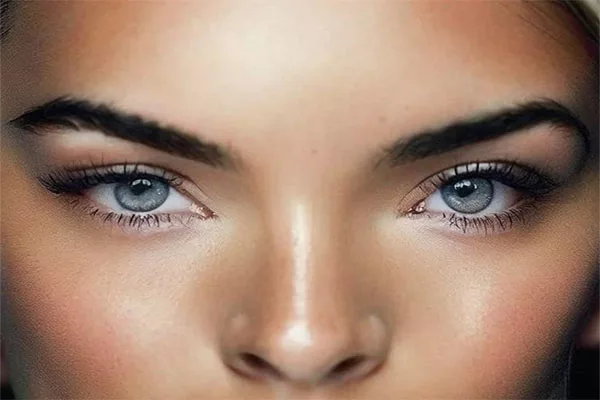Greetings, dear reader. Today we will be discussing a common beauty concern, dark circles under the eyes. One of the solutions to this problem that has gained popularity in recent years is the use of fillers. However, there is a lot of information out there regarding this topic, which can be overwhelming and confusing. That’s why we have compiled a comprehensive guide to fillers for dark circles under eyes. Sit back, relax, and get ready to learn everything you need to know about this anti-aging treatment.
What are fillers?
Before we dive into fillers for dark circles, let’s talk a little bit about what fillers actually are. Fillers, also known as dermal fillers or soft tissue fillers, are injectable substances that are used to plump up and add volume to specific areas of the face. They are primarily made up of two substances: hyaluronic acid and collagen. Hyaluronic acid is a natural sugar molecule that is found in the body and helps to keep the skin hydrated and youthful-looking. Collagen is a protein that gives your skin its structure, elasticity, and firmness.
When injected into the skin, fillers provide a quick and noticeable improvement in the appearance of wrinkles, fine lines, and other signs of aging. They are also used to add volume to areas of the face that have lost fullness over time, such as the cheeks, lips, and under the eyes. Fillers can be a great option for those who want to achieve a more youthful, refreshed look without undergoing surgery.
Causes of dark circles under eyes
Dark circles under eyes can be caused by a variety of factors, including genetics, aging, and lifestyle habits. Here are some common causes of dark circles:
- Genetics: Sometimes, dark circles under eyes can be hereditary. If your parents or grandparents have dark circles, you may be more likely to develop them too.
- Aging: As we age, the skin around our eyes becomes thinner and loses volume, making dark circles more prominent.
- Lifestyle habits: Lack of sleep, smoking, alcohol consumption, and poor diet can all contribute to the development of dark circles.
- Allergies: Allergies and nasal congestion can cause blood vessels in the under-eye area to dilate, resulting in a bluish tint.
- Sun exposure: Overexposure to the sun can cause pigmentation in the skin under the eyes, leading to dark circles.
Understanding the cause of your dark circles can help you determine which treatment option is best for you.
How do fillers work for dark circles under eyes?
Now that we know what fillers are and the common causes of dark circles under eyes, the question remains: how do fillers work to treat this issue?
Fillers for dark circles are typically made of hyaluronic acid, which is a natural substance found in the body that provides volume and hydration to the skin. When injected into the under-eye area, fillers fill in the hollows and depressions that cause dark circles and create a smoother, more youthful appearance.
In addition to adding volume to the under-eye area, fillers can also help to stimulate collagen production, which can further improve the appearance of the skin over time. Unlike some other treatment options, such as creams or serums, fillers provide immediate results that can last for several months.
It’s important to note that while fillers can be an effective and safe treatment for dark circles, they should only be administered by a qualified healthcare professional with experience in injecting fillers. When done incorrectly, fillers can lead to unwanted side effects, including lumps, asymmetry, and bruising.
What to expect during the filler procedure
If you are considering fillers for dark circles under eyes, it’s important to have a clear understanding of what to expect during the procedure. Here is a general overview of what the process might look like:
- Consultation: Before the procedure, you will have a consultation with a healthcare professional to discuss your goals, medical history, and any concerns you may have. They will also assess whether you are a good candidate for the procedure.
- Preparing the area: The healthcare professional will then clean the under-eye area and may apply a topical numbing cream or ice to minimize discomfort during the injection.
- Injection: The healthcare professional will use a fine needle to inject the filler into specific areas under the eye, such as the tear trough or under-eye hollows.
- Post-procedure: After the injection, you may experience some swelling, bruising or redness, which should subside within a few days. You will need to avoid touching or rubbing the treated area and avoid strenuous exercise for at least 24 hours.
- Follow-up: Depending on the specific filler used, you may need to schedule a follow-up appointment in a few weeks to ensure optimal results.
Overall, the procedure generally takes under an hour and has little to no downtime, making it a convenient option for those with busy schedules.
Are fillers safe for treating dark circles under eyes?
As with any medical procedure, there are some potential risks associated with fillers for dark circles under eyes. However, when administered by a qualified healthcare professional, the risks are minimal. Some potential risks and side effects include:
- Bruising and swelling: The most common side effects of fillers are bruising and swelling, which should subside within a few days.
- Infection: There is a small risk of infection with any injection procedure, although this is rare.
- Allergic reaction: While rare, some people may experience an allergic reaction to the filler material.
- Asymmetry: In rare cases, the filler may cause asymmetry in the treated area.
- Migration: In very rare cases, the filler may migrate from the intended area and cause unwanted effects.
To ensure your safety and minimize the risk of complications, it’s important to choose a qualified healthcare professional with experience in injecting fillers. You should also disclose your full medical history and any medications you are taking to your healthcare professional.
How long do fillers last for dark circles under eyes?
One of the benefits of fillers for dark circles under eyes is that they provide immediate results that can last for several months. However, the longevity of the results will depend on several factors, including:
- The type of filler used: Some types of fillers are designed to last longer than others.
- Your metabolism: The rate at which your body metabolizes the filler can affect how long it lasts.
- Your lifestyle habits: Factors such as smoking, alcohol consumption, and sun exposure can all affect the longevity of the filler.
In general, fillers for dark circles under eyes can last anywhere from 6 months to 2 years. To maintain your results, you may need to undergo additional treatments as the filler begins to break down. Your healthcare professional can help you determine how often you will need to receive treatment to maintain your desired look.
Are there any alternatives to fillers for dark circles under eyes?
While fillers can be an effective option for treating dark circles under eyes, they may not be right for everyone. Additionally, some people may want to explore other treatment options before deciding on fillers. Here are some alternatives to fillers for dark circles under eyes:
- Eye creams: There are many over-the-counter and prescription eye creams that can help to reduce the appearance of dark circles. Look for products that contain ingredients such as caffeine, vitamin K, and retinol.
- Platelet-rich plasma (PRP) therapy: This treatment involves injecting your own blood plasma, which is rich in growth factors, into the under-eye area to promote collagen production and reduce dark circles.
- Chemical peels: A chemical peel involves applying a solution to the skin that causes it to exfoliate and eventually peel off, revealing smoother, brighter skin.
- Laser treatment: Laser treatment can be used to reduce pigmentation and tighten the skin in the under-eye area.
- Surgery: In some cases, surgery may be necessary to correct severe under-eye hollows and dark circles. A surgical procedure known as blepharoplasty can remove excess skin and fat from the under-eye area.
It’s important to discuss all of your treatment options with a qualified healthcare professional to determine the best approach for your individual needs.
How to prepare for fillers for dark circles under eyes?
If you’ve decided to undergo fillers for dark circles under eyes, there are some steps you can take to prepare for the procedure and ensure the best possible results. Here are some tips:
- Choose a qualified healthcare professional: It’s important to do your research and choose a healthcare professional who is experienced in injecting fillers and has a history of successful patient outcomes.
- Avoid blood-thinning medications: Certain medications, such as aspirin and ibuprofen, can increase the risk of bruising and bleeding. You should avoid taking these medications for at least a few days before the procedure.
- Avoid alcohol and caffeine: Alcohol and caffeine can dehydrate the skin and increase the risk of swelling. You should avoid alcohol and caffeine for 24 hours before the procedure.
- Use ice: Applying ice to the under-eye area before the procedure can help to minimize discomfort and swelling.
- Plan for downtime: While there is typically little to no downtime after fillers for dark circles, you may experience some swelling or redness that could affect your appearance. You should plan accordingly and avoid social events immediately after the procedure.
By taking these steps, you can help to ensure a smooth and successful procedure and maximize your results.
Conclusion
In conclusion, fillers can be an effective and safe option for treating dark circles under eyes. By understanding how fillers work, what to expect during the procedure, and what alternatives are available, you can make an informed decision about whether fillers are right for you. To ensure the best possible results and minimize the risk of complications, always choose a qualified healthcare professional with experience in injecting fillers. With proper preparation and aftercare, fillers can help you achieve a more youthful, refreshed appearance and boost your self-confidence.
- American Society of Plastic Surgeons. (n.d.). Dermal fillers. Retrieved from https://www.plasticsurgery.org/cosmetic-procedures/dermal-fillers
- Broumand, V., & Wright, W. H. (2015). Periorbital anatomy and treatment of the tear trough deformity. Seminars in plastic surgery, 29(1), 23-26.
- Cohen, J. L., & Dayan, S. H. (2015). Dermal fillers in aesthetics: an overview of adverse events and treatment approaches. Plastic and reconstructive surgery, 136(4), 104S-114S.
- Goldman, A., & Wollina, U. (2015). Treatment approaches to periorbital hyperpigmentation. Clinical, cosmetic and investigational dermatology, 8, 151-158.
- Sadick, N. S. (2010). Injectable fillers: review of material and properties. Aesthetic Plastic Surgery, 34(3), 264-277.







